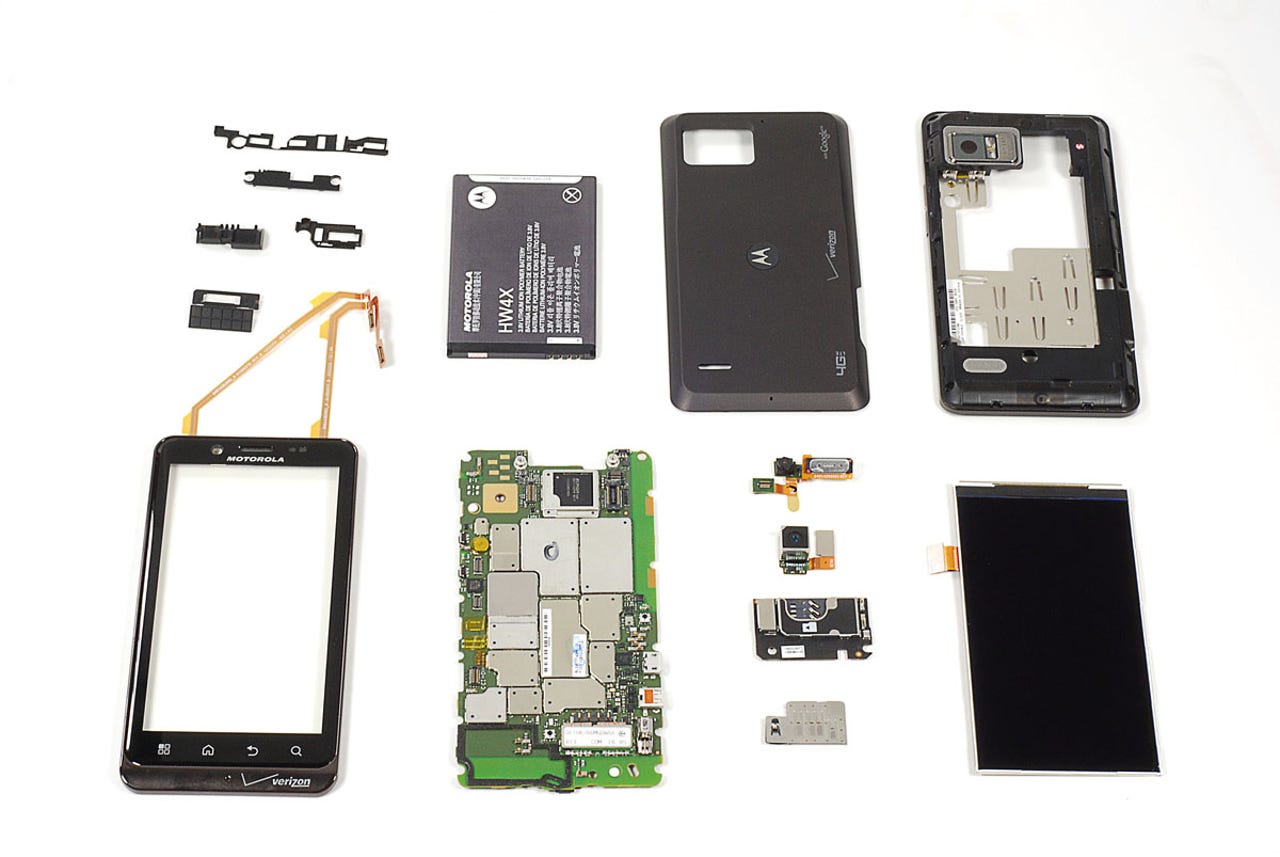Cracking Open the Motorola Droid Bionic


In September 2011, Verizon added a fourth device to its growing lineup of 4G LTE smartphones--the Motorola Droid Bionic. Like Verizon's other 4G phones (the HTC ThunderBolt, LG Revolution, and Samsung Droid Charge), the Bionic runs Google's Android operating system.
In May, I cracked open the HTC ThunderBolt, and was excited to get my hands on another 4G device. Follow along as I go inside the Motorola Droid Bionic.
For a more in-depth review of the Bionic's internal hardware, check out my article, "Droid Bionic Teardown: Motorola switches processors, upgrades RAM in final version."
Photo by: Bill Detwiler / TechRepublic
Caption by: Bill Detwiler
The Motorola Droid Bionic is available from Verizon for $299.99 (US) with a two-year contract. I bought our Bionic test device (sans contract) from a local Best Buy Mobile location for $699.99 (plus tax). Interestingly, Verizon's Web site lists the full retail price as $589.99.
Photo by: Bill Detwiler / TechRepublic
Caption by: Bill Detwiler
Our the Droid Bionic has a 1GHz dual-core processor, 1GB of DDR2 RAM, 16GB of storage, 8MP rear-facing camera, VGA-quality front-facing camera, and 4.3" display (960x540 pixels).
Photo by: Bill Detwiler / TechRepublic
Caption by: Bill Detwiler
Inside the Droid Bionic's box, you'll find the device itself (includes removable back panel, battery, and microSD card), USB cable, power adapter, and product documentation.
Photo by: Bill Detwiler / TechRepublic
Caption by: Bill Detwiler
The Droid Bionic measures 5" (H) x 2.6" (W) x 0.5" (D). It weighs 5.6 ounces.
Photo by: Bill Detwiler / TechRepublic
Caption by: Bill Detwiler
Removing the Droid Bionic's back cover grants you access to the user-replaceable battery, microSD card slot, and SIM card slot.
The Droid Bionic's rear case is held in place with 11 Torx T5 screws.
Before removing the rear case, I had to peel off a sticker that lined the back of the battery compartment.
With the rear case screws and battery compartment sticker removed, you can remove the rear case.
The internal loudspeaker, headphone jack, and LED flash are mounted to the rear case.
Unfortunately, the EMI shields on the Motorola Droid Bionic's main PCB are soldered in place. To avoid damaging the components on the PCB, I decided to leave the shields in place. There are still a few components we can remove from the main PCB.
One of the only removable shields on the Droid Bionic's main PCB is the one covering the processor. It also covers the rear-facing camera's connector.
Using a thin metal blade, I detached the 8MP rear-facing camera's connector from the main PCB.
Several rubber "cushions" surround various components on the main PCB. I removed them using a pair of tweezers.
When announced at CES 2011, Motorola indcated that the Droid Bionic would use a dual-core Nvidia TEgra 2 processor. But the final version of the phone uses this Elpida B8064B2PB-8D-F chip, which contains 8 Gb DRAM and the Texas Instruments OMAP4430 Application Processor.
The Motorola Droid Bionic was remarkabley easy to disassemble. It uses standard screws, has a user-replaceable battery, and readily-accessible components. Only the rear-facing camera was a pain to remove.
For a more in-depth review of the Bionic's internal hardware, check out my article, "Droid Bionic Teardown: Motorola switches processors, upgrades RAM in final version."